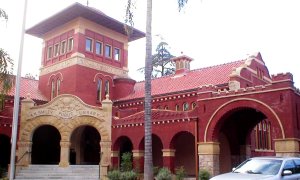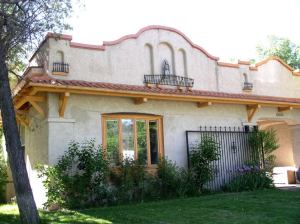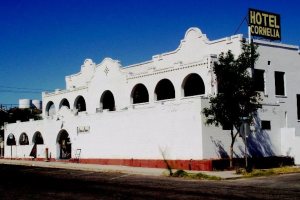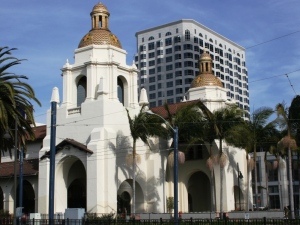Mission Revival

San Antonio, TX. The Sunset Depot, c.1904, for the Southern Pacific Railroad's "Sunset" Route. Features a shaped parapet, tower with roof overhang and exposed rafters, and Spanish Baroque detailing around the windows.
PERIOD OF POPULARITY: Roughly 1890s – 1940 (mostly prior to the Great Depression)
INTRODUCTION TO REVIVAL STYLES: Each revival style identifies specifically with an architecture of an earlier time and place, especially those related to early American or European precedents. Several popular revival styles are included on this blog, though other, less popular revival styles also appeared. To classify this grouping of architectural styles presents a challenge, as one could argue that many earlier Victorian styles were similarly revivalist. In fact, one publication includes several revival styles within the larger category of Victorian architecture (Cunliffe, et. al. 2010). The concept of “period styles” has also been adopted by some writers (including this one), though it was an early 20th century term used by non-professionals to romanticize the past. On the flip side are the architectural historians who prefer the more academic “Age of eclecticism” or “Eclectic Era,” which is an important concept to provide historical context here. The Eclectic Era, however, includes both revival and early modern styles that competed ideologically and appeared nearly simultaneously before the Great Depression. For purposes here, then, “revival styles” seems most appropriate, adapted widely across America for use in middle-class homes, wealthy country houses, commercial buildings, early skyscrapers, and civic buildings. Though overlapping with the more picturesque Victorian era, these styles largely gained popularity during the first two decades of the 20th century and heavily influenced our residential and commercial landscapes.
During this time (mostly between 1900 and 1929), accuracy of styles became important once again, unlike Queen Anne style, which borrowed from a variety of sources. Most Important, revival styles look to the past for inspiration. The trend toward revivalist architecture gained momentum from the 1893 Chicago World’s Fair, the Columbian Exposition, where historical interpretations of European styles were encouraged. Simultaneous to the rise of revivalist architecture, the modern era saw its beginnings with architects who were instead looking to the future, not to the past, with more progressive, modernist styles. Thus defines the Eclectic Movement of the early 20th century, which consisted of a simultaneous and perhaps competing interest in both modern and historic architectural traditions. This variety, or eclecticism, provided for one of the most diverse and colorful periods for architecture and urban design in American history, when almost anyone with at least a middle-class income could choose from one of a dozen or more styles for their home.
HISTORICAL BACKGROUND AND FEATURES: The mission style originated in southern California and was the first style to diffuse eastward from the West. The style was considered the “California counterpart” to the Georgian-inspired Colonial Revival popular in Northeast. Most famously, the style was adopted by both the Southern Pacific and Santa Fe (AT&SF) Railways for train stations, resort hotels, and other rail corridor buildings, essentially as an effort to “theme” the Southwest for eastern travelers. The style includes mission-shaped dormers and/or roof parapet; wide, overhanging eaves with exposed rafter beams, red-tiled roof, stucco walls, and arched windows or doors on the ground level. The style is similar to its “cousin,” Spanish Revival. It is relatively easy to identify the mission style, however, with its distinctive curved or shaped parapet (the wall extending up above the roof line) and – in ornate cases – one or two square towers symbolizing a mission church and its bell tower. There also tends to be a small roof overhang (eaves) with visible rafters underneath, unlike Spanish Revival.
For More Photos of Mission Revival on Flickr, Click Here.

Redlands, CA. The A.K. Smiley Public Library, opened 1898. An ornate example of mission style, with curved parapets over the entry and gable, square tower with overhang, round-arched portico and porte-cochere.

Durango, CO. The facade of this middle-class home is dominated by its curved parapet and simulated roof overhang with brackets.



